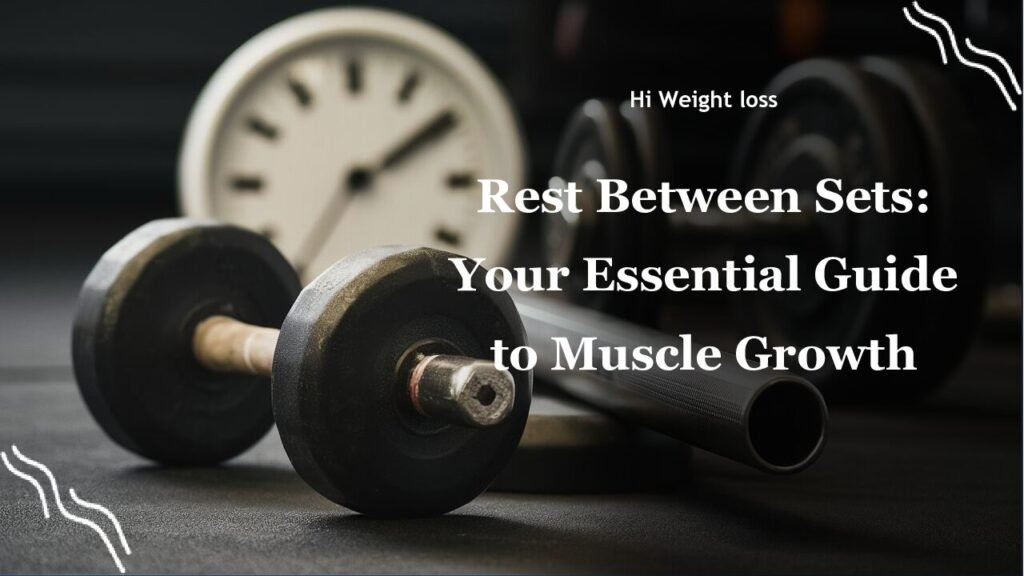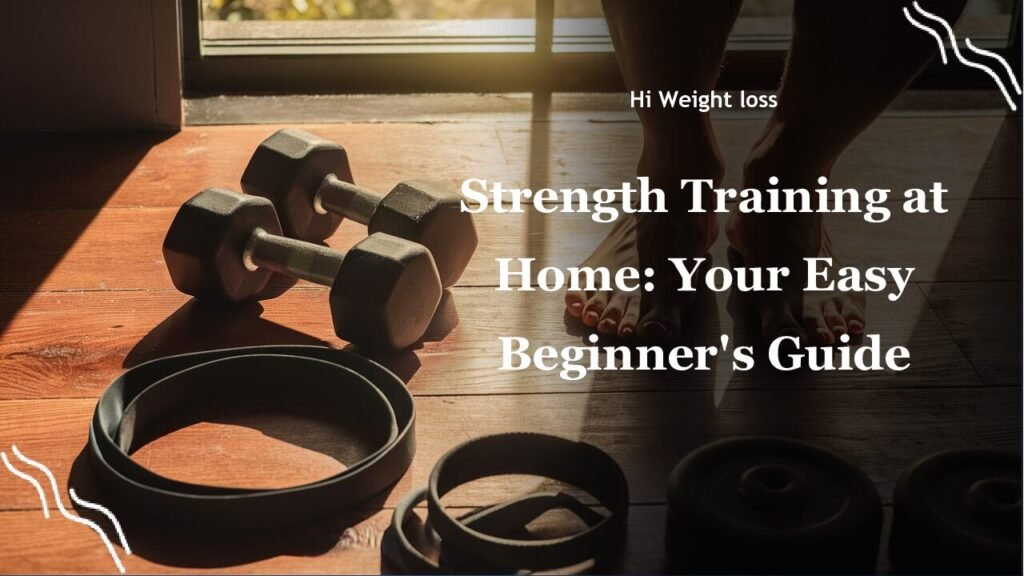“`
Ever feel lost in the gym, unsure if you’re resting too much or too little between sets? It’s a common struggle – pushing hard, but not seeing the results you want because the rest periods feel arbitrary. I remember when I first started lifting; I’d haphazardly guess at rest times, sometimes feeling completely gassed before the next set, and other times feeling like I’d lost all momentum. This article will guide you on how long to rest between sets for muscle gain, strength training, and endurance, providing clear advice so that you can train smarter and see real progress.
Understanding Rest Between Sets
Rest between sets isn’t just about catching your breath; it’s a critical component of your training program. The length of your rest period directly affects your body’s energy systems, impacting your performance and the specific results you achieve. Are you aiming for maximal strength, muscle growth, or muscular endurance? Each goal requires a different approach to rest. Let’s explore these differences and how they translate into your workouts.
Rest Times for Strength and Power
When you’re focusing on strength and power, you’re engaging your phosphagen system—the immediate energy source for high-intensity, short-duration activities, such as a heavy lift. The goal here is to allow this system to recover fully so that you can lift maximum weight in the subsequent sets. Typically, that means resting longer.
The recommendation is generally to rest for 2 to 5 minutes between sets when focusing on strength and power. These longer rests are vital for allowing your muscles to replenish their energy stores and prepare to perform at their peak again. Think about it like this: when you’re lifting heavy, your body needs a breather to really hit those hard reps without compromising form or power.
My friend, Mark, used to rush his strength training workouts, convinced that shorter rest times were better, but he found himself plateauing. Once he started incorporating these longer rest periods, he noticed a significant increase in the weights he could lift and a boost in his overall power. Remember, patience and proper rest can lead to impressive strength gains.
Optimizing Rest for Hypertrophy (Muscle Growth)
If your goal is muscle growth, or hypertrophy, the rest times between sets are slightly different. Here, you’re aiming to induce muscle damage and metabolic stress, leading to muscle repair and growth. Shorter rest periods are used to keep your muscles engaged and pushing the limits of what they can handle during a set. But how short is short?
For hypertrophy, it’s recommended to rest for 1 to 3 minutes between sets. Interestingly, research suggests that resting around 1.5 minutes may actually maximize gains. However, the difference between 1.5 minutes and 2 to 3 minutes is often minimal, so personal preference and how your body responds plays a big part in finding the optimal time. Think of it as maintaining a challenging level of fatigue while still allowing for effective performance.
I used to aim for one minute rest periods thinking that the shorter I rested the better, but I realized I was sacrificing proper form to get the sets done, resulting in injuries and poor growth. I found that a 90-second rest period allowed me to perform each set effectively, with good form, and to feel properly challenged.

Rest Intervals for Muscular Endurance
When you’re training for muscular endurance, the game changes again. Your focus shifts from heavy lifting to high repetition ranges with lighter weights. The key is to keep your muscles under tension for extended periods, improving their ability to endure repetitive movements.
For muscular endurance, you should rest for 30 seconds or less between sets. This shorter rest time keeps your muscles conditioned to endure quick recovery and fuel replenishment, allowing you to keep up with higher rep ranges. Think of it as teaching your muscles to work longer and harder without needing long breaks.
I often incorporate endurance-focused workouts into my training by keeping the rest between sets really short. Sometimes, I don’t even use a watch, but simply start the next set when my muscles feel ready, or before they’ve fully recovered. This approach has helped me develop my endurance, making it easier to perform tasks and exercise for longer periods of time.
General Rest Guidelines for Beginners
If you’re just starting, it can be overwhelming to figure out the ideal rest times. Don’t worry; there are some general guidelines to help you get started. For big compound exercises, such as squats, deadlifts, or bench presses, resting for 2 to 2.5 minutes is a good starting point. When it comes to accessory movements, rest times of 60 to 90 seconds should be sufficient.
These recommendations provide a solid foundation, allowing you to recover sufficiently for your next set. As you get more experienced, you’ll learn to listen to your body and adjust these times based on how you feel during your workout. Everyone responds differently, so it’s important to be adaptable to your personal needs. Remember to consider the volume of sets you’re performing when deciding on rest times.
Specific Recommendations Based on Sets
The number of sets you perform can also affect the ideal rest time. If you’re doing only two sets per exercise, a moderate rest of 2 minutes is sufficient. If you’re doing three sets, a slightly longer rest period of 3 minutes can be helpful. When you’re doing four or more sets, you might need a 3-minute or even very long rest of more than 3 minutes to maintain consistent performance.
Alternatively, you could incorporate circuit training with shorter 1-minute rest periods between exercises for a very different type of workout. This approach can be helpful for improving cardiovascular fitness and muscular endurance simultaneously. The key thing is to find what works best for you and your training needs.
Individualizing Rest Periods
While there are guidelines, ultimately, rest periods need to be individualized. The intensity and duration of your exercise will use different energy systems, and it’s crucial to tailor your rest periods according to your goals and your body’s response. Pay attention to your performance. If you’re feeling fatigued or your form is breaking down, you may need longer rest times.
Sometimes, I listen to my body and take longer rest periods if I need them, and sometimes I take shorter ones if I’m in the mood for a more intense workout. It’s all about balancing effort with recovery and recognizing how different energy systems work together. Don’t be afraid to experiment and find what works best for you.
Key Takeaways
Let’s sum up the key takeaways about resting between sets. For strength and power, rest between 2 and 5 minutes. If muscle growth is your aim, rest for 1 to 3 minutes, aiming for 1.5 minutes. For muscular endurance, 30 seconds or less is best. Beginners should start with 2 to 2.5 minutes for compound exercises and 60 to 90 seconds for accessory movements. Remember that the number of sets you’re doing also plays a part: you can use longer rest times if you’re doing more sets. And most importantly, individualize your rest periods by paying attention to your body and your goals.
I once thought rest was just time wasted, but I now see it as an active part of my training. If you start making small changes in how you manage the rest periods between sets, you will see big changes to your performance.
Table: Rest Times Based on Training Goal
| Training Goal | Recommended Rest Time |
|---|---|
| Strength and Power | 2-5 minutes |
| Hypertrophy (Muscle Growth) | 1-3 minutes (around 1.5 min for optimization) |
| Muscular Endurance | 30 seconds or less |
| General (Beginners, Compound Exercises) | 2-2.5 minutes |
| General (Beginners, Accessory Exercises) | 60-90 seconds |
Conclusion
Optimizing your rest times between sets is one of the most powerful things you can do in your workouts. It’s a strategic tool to enhance your results, whether you’re aiming for strength, muscle growth, or endurance. By understanding how different rest periods impact your energy systems and adjusting them to suit your specific goals, you’ll make significant progress. Remember, longer rest periods (2-5 minutes) are generally recommended for strength and power, medium rest periods (1-3 minutes) work best for muscle growth, and shorter rest periods (30 seconds or less) are suitable for muscular endurance. Start with general guidelines as a beginner and then personalize based on how your body responds. Now that you know how long to rest between sets, it’s time to get back in the gym and crush those goals!
Remember to prioritize proper form over rushing through sets. I always say that the little things make a big difference, and this is certainly one of those little things! Share this with a friend who might be rushing their rest periods.
FAQ
Should I always follow a strict rest time?
While the recommendations provide a good starting point, it’s important to listen to your body. If you’re feeling extremely fatigued or your form is breaking down, you may need a bit more rest. Flexibility is key!
Can I use a timer during my workout?
Using a timer is a great way to ensure that you’re following the recommended rest times. This can help keep your workouts consistent and prevent you from accidentally resting too long or too short.
What if I feel fully recovered before the rest time is up?
If you feel ready to go before the rest time is up, you can certainly start your next set a little earlier, especially if you’re in the flow. However, be mindful of the overall intensity and try not to compromise your performance by reducing rest periods too much. For some, a 90-second rest is enough.
How does rest time affect muscle soreness?
Rest periods don’t directly impact muscle soreness as much as the intensity and type of exercise you do. However, giving your muscles enough rest between sets helps maintain workout quality and may lead to less muscle soreness because you’re not pushing yourself too hard due to lack of recovery.
“`



